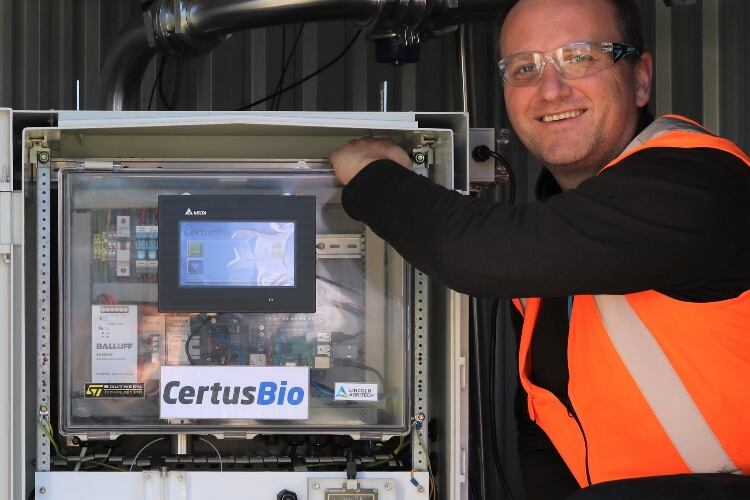New Zealand company Lincoln Agritech Ltd created the technology, which was then commercialized by Christchurch-based start-up company, CertusBio.
The result is an automated biosensor capable of continuous monitoring in commercial operating conditions. Known as Milk-Guard, the device uses a lactose-specific enzyme to measure the percentage of dairy products present in waste streams and processing lines.
These percentages are automatically sent to a dairy plant process control room, where operators can monitor them and make changes to the production process if necessary.
Current methods
CertusBio CEO Dr Matthew Jones said due to the vast quantity of dairy products processed in New Zealand, large amounts of valuable products could be lost quickly.
“Given the significant economic return to New Zealand from the dairy industry, it is vital to extract as much value from dairy processing as possible by using reliable, fully automated systems to accurately and rapidly monitor losses in dairy processing waste streams,” Jones said.
“Dairy plant operators will be able to improve the resource and energy efficiency of their plant processes by reducing losses of valuable dairy products and ultimately increasing company profitability.”
Jones said current loss-monitoring methods were reliant on retrospective testing collected over 24 hours.
“Because this testing is done after the dairy products have been processed, it doesn’t allow for adjustments to be made while the plant is operating, so losses can’t be limited in real time.”
Losses and pollutants
Two-to-three per cent of all dairy products are lost during processing and while this is inevitable to a certain extent, a significant proportion of losses could be avoided, the company said.
“The estimated total loss for an average dairy industry processing line is NZ$6.5m (US$4.2m) per year,” Jones said.
“This also contributes to the level of pollutants caused by the dairy processing industry, as dairy plant wastewater has a number of characteristics that require careful management, including influent pH swings of 2-13, high fat loads and variable incoming organic and nutrient loads. Variations occur both on a seasonal and daily basis.”
According to Water NZ, irrigation is the most commonly used method in the country for treating dairy processing wastewater. Soils must have good infiltration capacities because if the infiltration rate is too low, wastewater will pond on the surface of the land. Wastewater can then undergo anaerobic decomposition, resulting in odor, acidification and damage to the plant cover.
If infiltration rates are too high, wastewater will spend insufficient time in the top soil to receive adequate treatment, leading to possible groundwater contamination.
Cartridge system
Trials at dairy processing plants have demonstrated Milk-Guard’s ability to frequently detect product losses during processing, which the company estimates could be worth in excess of NZ$30,000 (US$19,000) for a single event.
“Milk-Guard is the first interference-free continuous monitoring device aimed at the dairy processing industry. The biosensor puts control in the hands of process operators to dramatically reduce processing loses,” Jones noted.
CertusBio said its lactose biosensor technology is robust enough for continuous monitoring applications where a single sensor can be used to make thousands of precise measurements within dairy plant wastewater.
The technology relies on a “biosensor cartridge system” similar to a standard printer cartridge to increase the reproducibility of measurements and reduce maintenance requirements for process operators. Cartridges are replaced on a monthly basis with used cartridges being recycled for further use by CertusBio.
Investment for global reach
In addition to wastewater monitoring to reduce processing losses, the Milk-Guard device can be used to account for all material entering and leaving a processing plant, liquid transfers within a plant, and segregating raw materials containing high value products.
Jones said CertusBio is seeking additional investors and a wider range of dairy processors to further demonstrate the economic and environmental benefits of the technology.
“Excellent traction has been made with the New Zealand dairy industry, but as with any new technology, significant investment is required to bring it to the market quickly. Our next step is to expand the testing of the technology to international dairy processors and make on impact on a global scale.”

